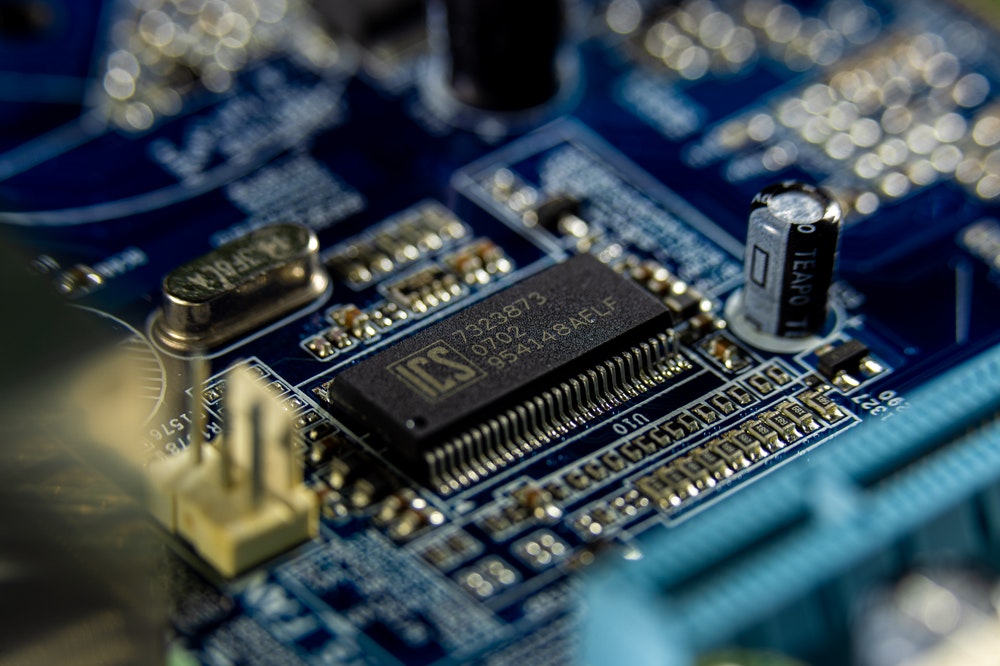If you Google the CHIPS and Science Act that passed both the US House and Senate in DC last week, you’ll find a lot about the political reasons it needed or didn’t need to pass, the political players involved, and even stories of rare political bipartisanship.
But what does the $280 billion legislation, which commits to providing $52 billion in subsidies for US semiconductor manufacturers, actually do? Who will receive the funding? Is it something that will affect climate change? Will it impact Americans economically as a recession looms? Will it affect you as a technologist?
Before its passage, the CHIPS and Science Act was known simply as the CHIPS Act. CHIPS stands for “creating helpful incentives to produce semiconductors.”
So, why are semiconductors important?
Semiconductors, such as the electrical circuit “wafers” you see when you open up a computer (though they’re often far smaller than that), are at the heart of much modern technology, including smartphones, TVs, digital cameras, LED bulbs, ATMs, medical equipment, cars — you get the picture. We use them every day without thinking about it.
The issue the CHIPS and Science Act addresses is that, considering how ubiquitous semiconductors are in both industry and the everyday lives of regular people, the United States produces a relatively small percentage of them.
As many as a quarter of all semiconductors produced globally are made in China. About 90% of the most advanced semiconductors are produced by one Taiwanese company, Taiwan Semiconductor Manufacturing Company. Overall, about 75% of all semiconductors are produced in East Asia. Other countries with growing semiconductor production include Germany and the Netherlands.
By contrast, only about 12% of modern semiconductor manufacturing is happening in the US, and that number has dropped significantly from 37% in the 1990s.
Obviously, all of this has economic and political implications, but to keep it simple, the US needs to invest more into domestic semiconductor production, and the CHIPS and Science Act will make it so.
As it happens, many of the world’s largest chip manufacturers, including Intel and Nvidia, are US companies that primarily manufacture in Asia, Europe and other parts of the world.
With the passage of the CHIPS and Science Act, an income tax credit for semiconductor equipment or manufacturing facility investment will be in effect through 2026.
The legislation also establishes a trust fund to support collaboration with other countries, to be allocated upon reaching an agreement with foreign government partners.
What is the CHIPS Act?
Supporting innovation is also a major component of the act. It says in its summary:
“The Department of Commerce shall, through the National Institute of Standards and Technology (NIST), carry out a program of research and development investment to accelerate the design, development, and manufacturability of next generation microelectronics, including through the creation of a Manufacturing USA institute for semiconductor manufacturing. Commerce shall also establish a program to match state and local government incentives offered to private entities for the purposes of building fabrication facilities relating to semiconductor manufacturing.”
To break that down, research and development for the next generation of chips will be federally funded, as will programs to accelerate bringing new technology to the manufacturing stage. Some of the research areas that could get funding include robotics and artificial intelligence.
State and local incentives to build chip manufacturing plants will also be matched federally through a new program.
Then there’s this:
“Further, Commerce shall assess the capabilities of the U.S. industrial base to support the national defense in light of the global nature of supply chains and interdependencies between the industrial bases of the U.S. and foreign countries with respect to the manufacture and design of semiconductors.”
Simply put, there are risks associated with entering what can be seen as a “semiconductor war” with China, which presently supplies the US with most of the chips we use. This part of the act says that the geopolitical risks will be assessed and addressed. What that means exactly remains to be seen.
Who will receive funding?
For sure big US manufacture will see subsidies Intel, Micron, Texas Instruments and Nvidia will all be rewarded if and when they expand manufacturing in the US.
With the investment in innovation, others who may qualify for funding include:
- University researchers
- STEM startups that use/develop semiconductors
- Nonprofits involved with semiconductor manufacturing workforce training
- Suppliers to chip manufacturers
- R&D for fabless chip makers
Will the bill affect climate change?
An earlier version of the CHIPS and Science Act, called The Endless Frontier Act, included an increase of spending on technology, science and fighting climate change; the pared down current act that passed doesn’t mention climate.
Will it impact Americans economically?
More manufacturing means more jobs, both in research and design of chips and in manufacturing them. Those jobs are probably a couple of years away at least, but the act will economically impact some Americans.
You can read the entire text of the CHIPS and Science Act, which includes a lot of information on qualifications for receiving subsidies, on Congress.gov.







